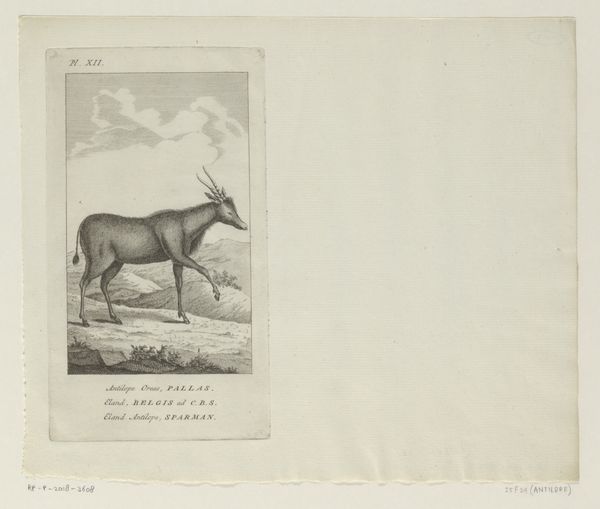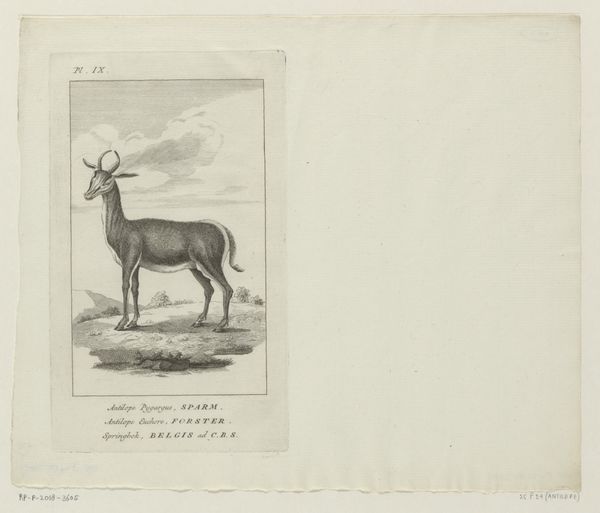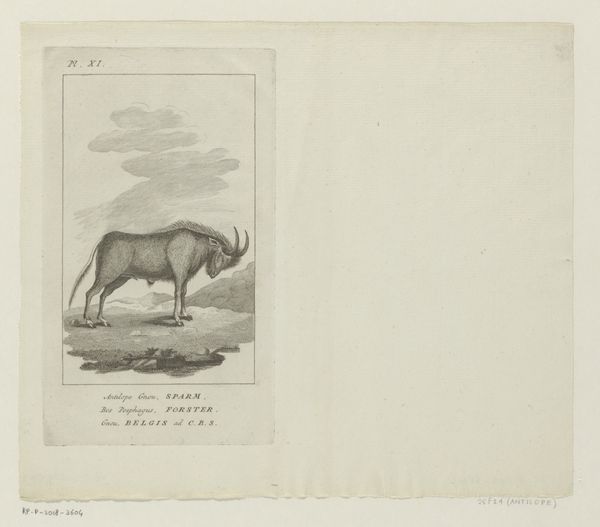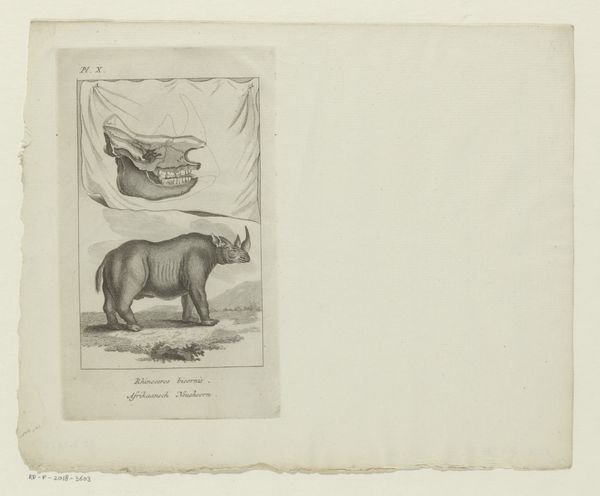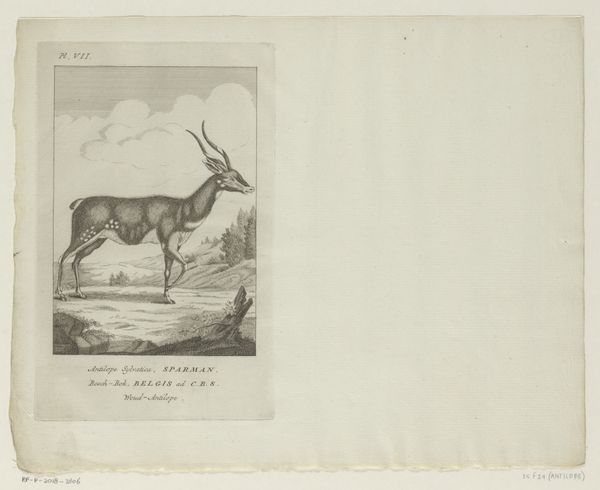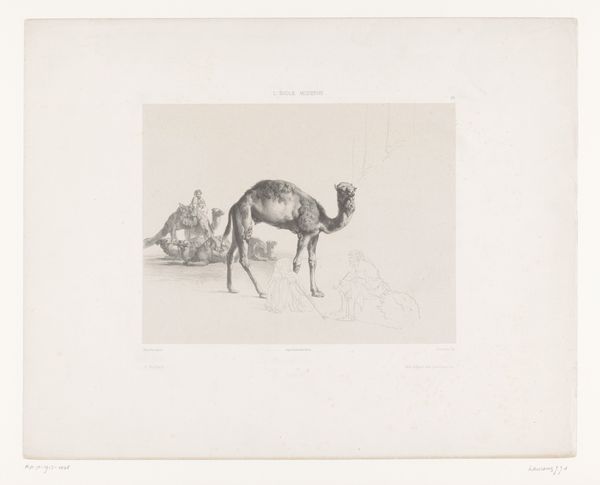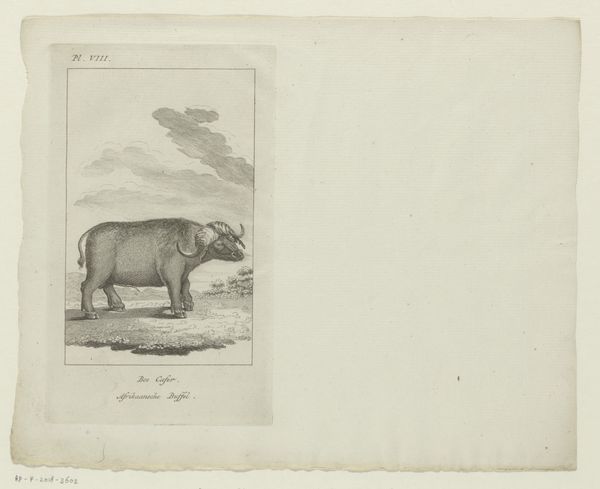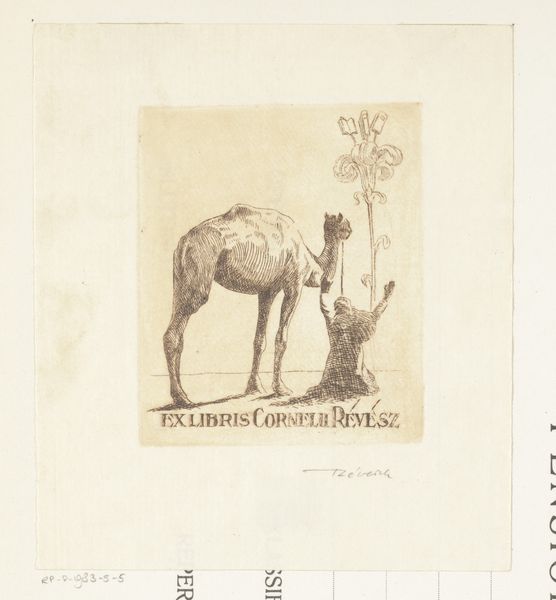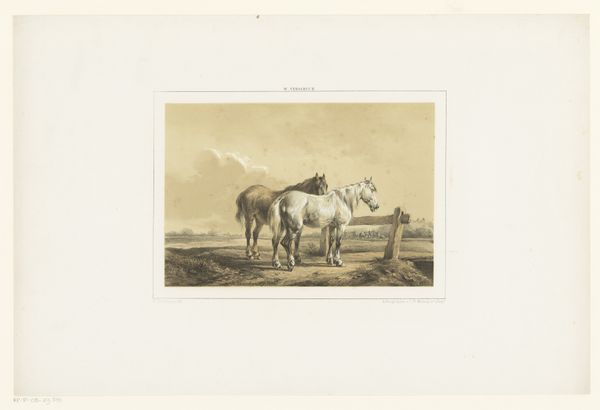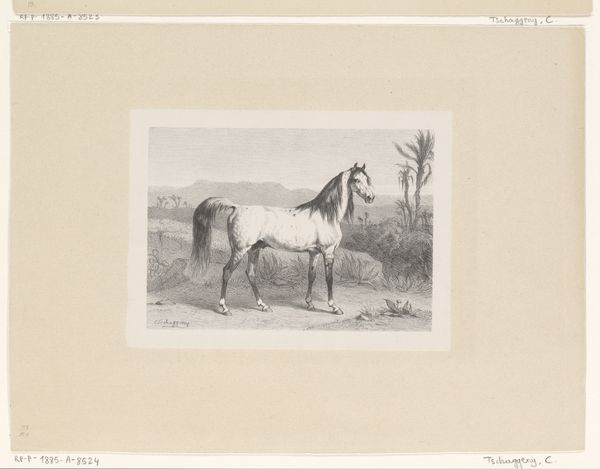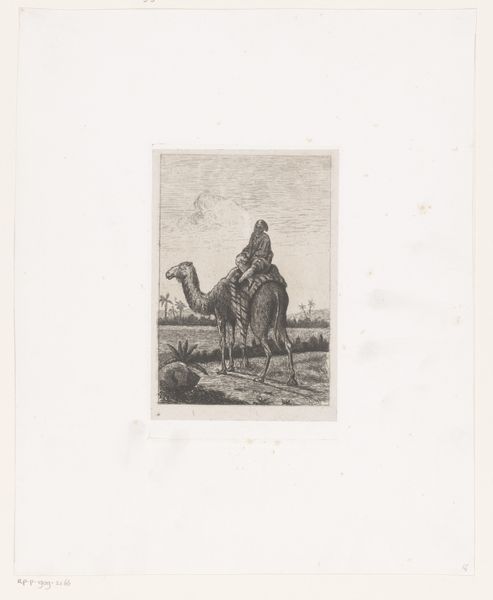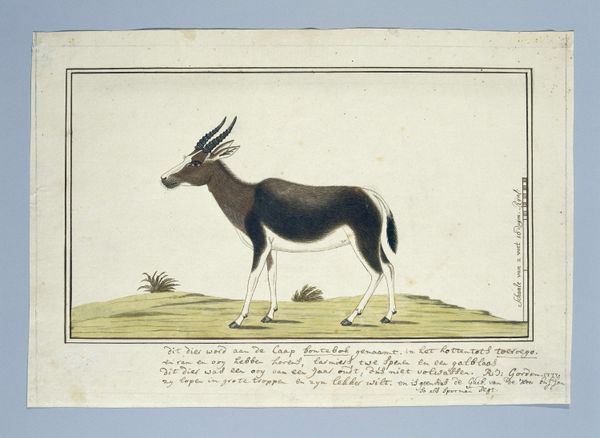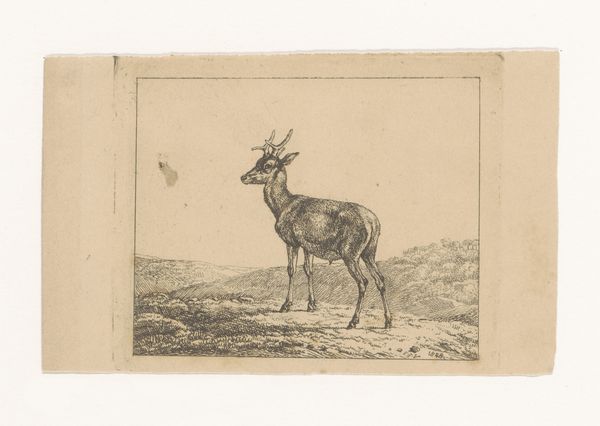
print, engraving
#
neoclacissism
# print
#
landscape
#
engraving
Dimensions: height 205 mm, width 122 mm
Copyright: Rijks Museum: Open Domain
Editor: So, here we have "Hartebeest," a print from 1787 by an anonymous artist. It's an engraving, and the animal is so precisely rendered; it almost feels scientific. How do you interpret this work? Curator: Well, viewing this through a historical lens, the late 18th century saw a surge in scientific illustration driven by Enlightenment ideals. These images weren’t just about capturing likeness; they served to classify and understand the natural world. Think about how the burgeoning scientific societies and museums shaped what kind of images were commissioned and consumed by the public. Does the clean style remind you of anything from the Neoclassical movement? Editor: I do notice how the scene itself seems carefully constructed and stripped to its basics - more concept than reality. Curator: Precisely. The image presents a specimen rather than an animal within a dynamic ecosystem. Ask yourself: what is emphasized? What does this tell us about the social value placed on natural history and taxonomy at the time? How did the art market then facilitate the wide dissemination of knowledge? Editor: That's a great way to look at it. I was so focused on the artistry itself but putting it into its social context makes the image all the richer! Curator: Art's meaning often emerges when we place it within its broader cultural and institutional frameworks. Seeing those connections lets us see a work of art, perhaps, as the product of a place, a time, a culture...
Comments
No comments
Be the first to comment and join the conversation on the ultimate creative platform.
